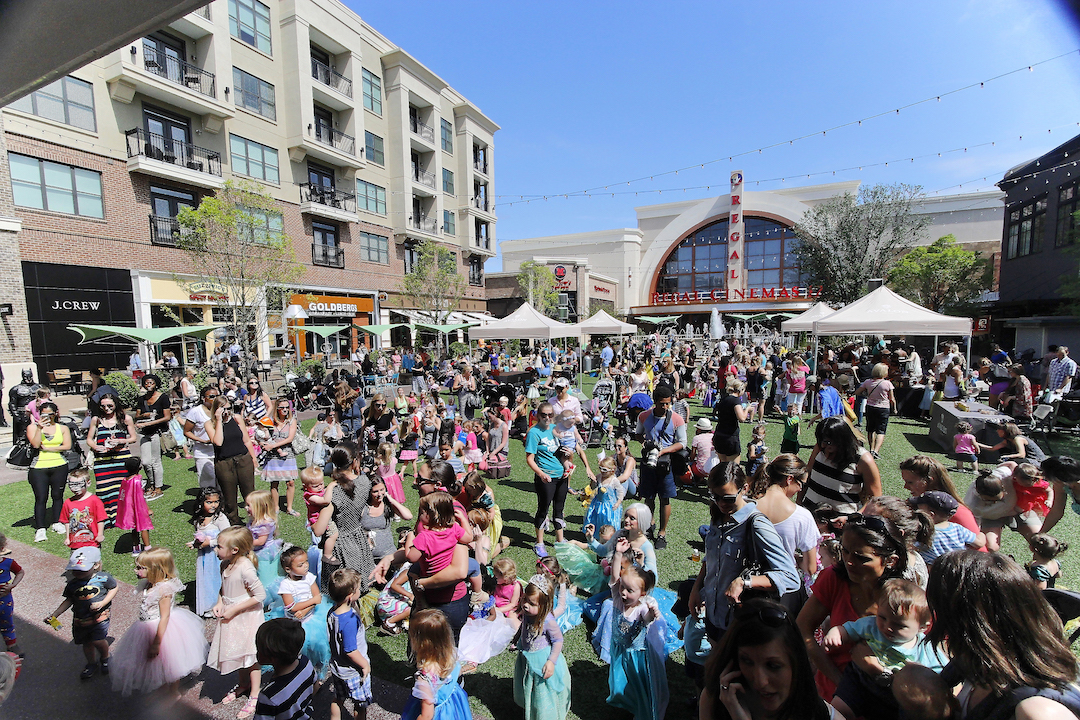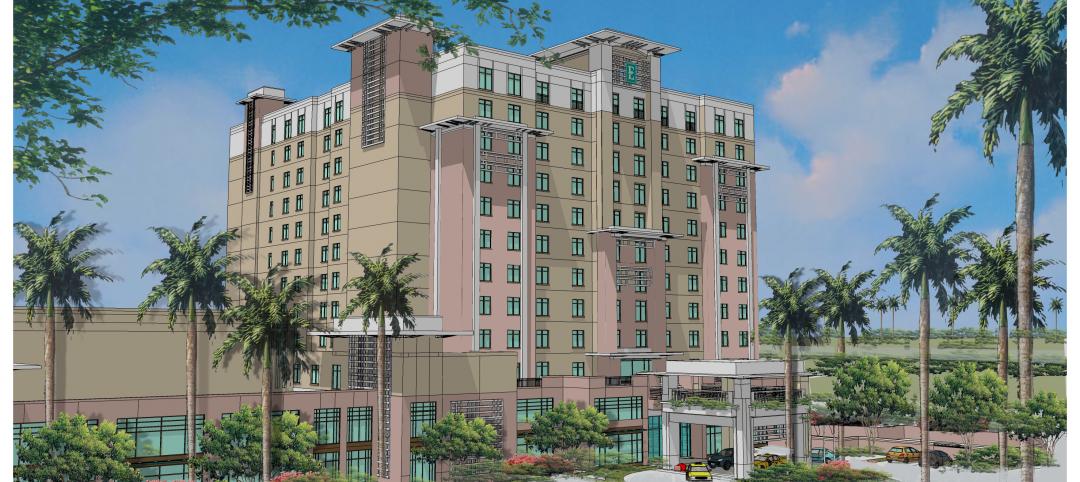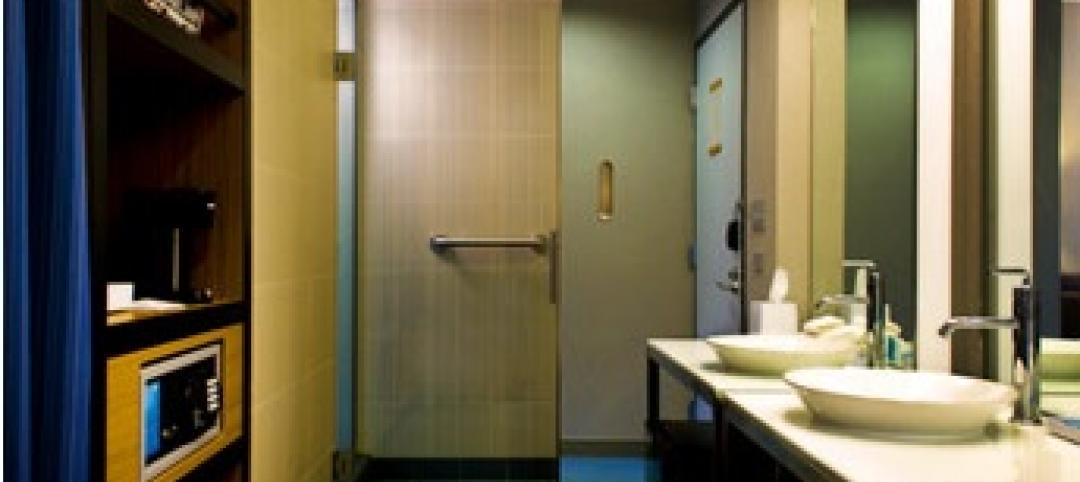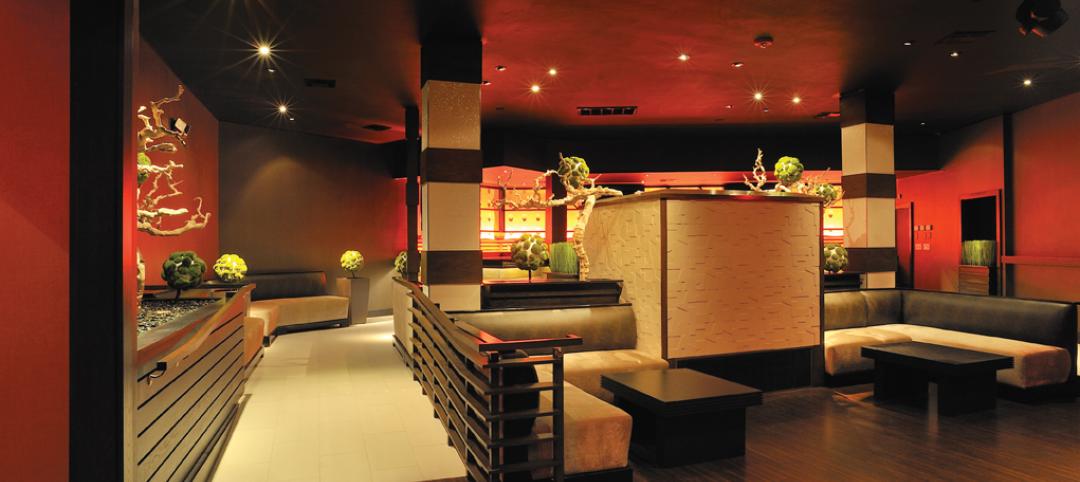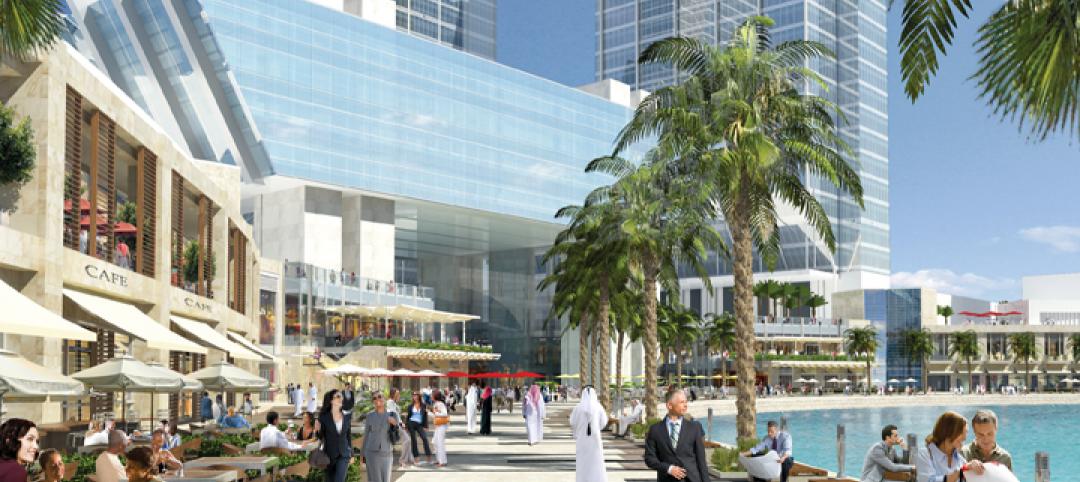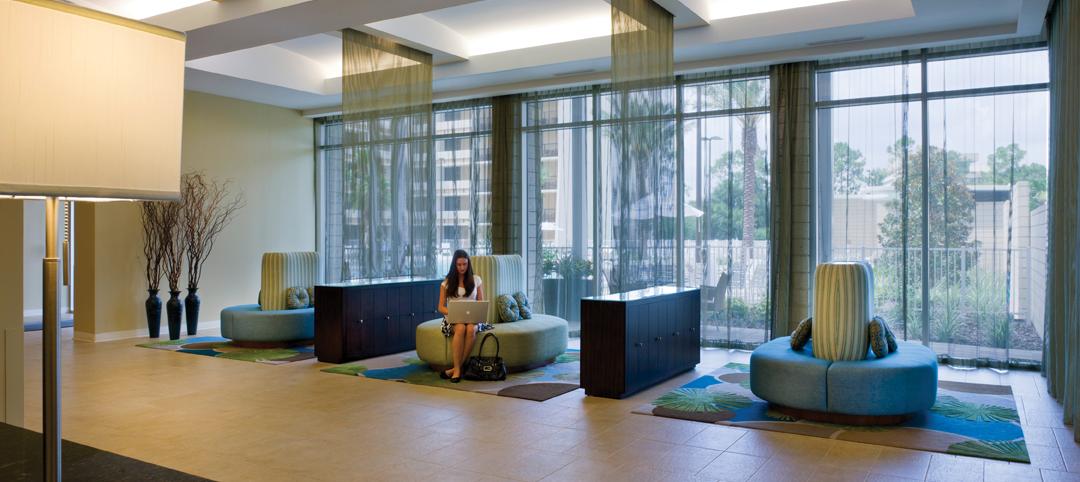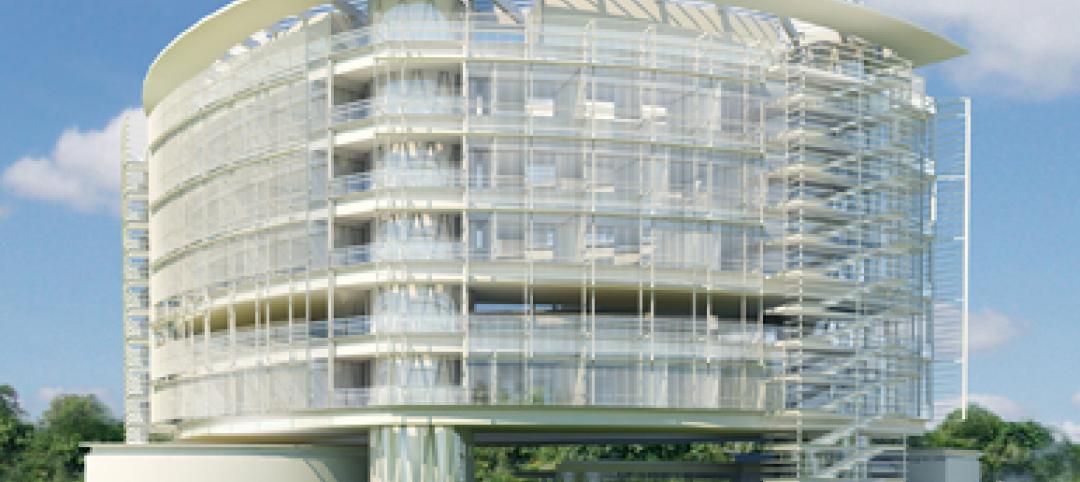While it will always be the tenants that bring traffic to a development, the real challenge for developers is keeping the traffic on-site for an extended period of time, creating opportunities for both cross-shopping and guest engagement.
Increasing dwell time has been a primary focus of developers and tenants alike given the fact that when customers linger, they spend more. According to a study by Path Intelligence, increasing dwell time by just 1% leads to an average 1.3% increase in sales, and for tenants that can add up.
Developers can add value by activating underutilized space to increase guest interaction and introduce programming and placemaking to keep consumers engaged. Building façades, alleyways, and even parking lots (once thought of as dead space) can all be repurposed to not only differentiate your property, but allow for a more memorable connection with guests.
Here are five ways to activate ‘dead space’ in mixed-use developments
1. Celebrate the destination. By understanding the unique location and target consumers, developers can find opportunities to bring a local connection to the forefront. Consumers organically form stronger bonds with destinations they feel they can relate to on a personal level. Developers should leverage this opportunity to identify meaningful symbols or touchpoints that bring the unique community to life.
From commissioning a local artist to activate a parking garage wall, to implementing a regional hobby like cornhole outside a food court, there are opportunities to make a more meaningful connection with local shoppers, so it doesn’t just feel like “a shopping center”—it feels like “their shopping center.”
2. Make space functional. Provide guests with opportunities to become immersed in the experience, through touch, trial, and play. Anytime you can allow for interactive experiences you are no longer offering just products, you are engaging consumers and creating more reasons to visit. For example, turning a building façade into a rock-climbing wall or carving out space for a dog park gives the property robust lifestyle offerings that can benefit both the shopper and the tenants.
A development that offers guests both product and meaningful services is more likely to thrive as some legacy retailers struggle to adapt to the changing industry. Leveraging space for engaging programming, activities, and events will continue to bring guests to your property.
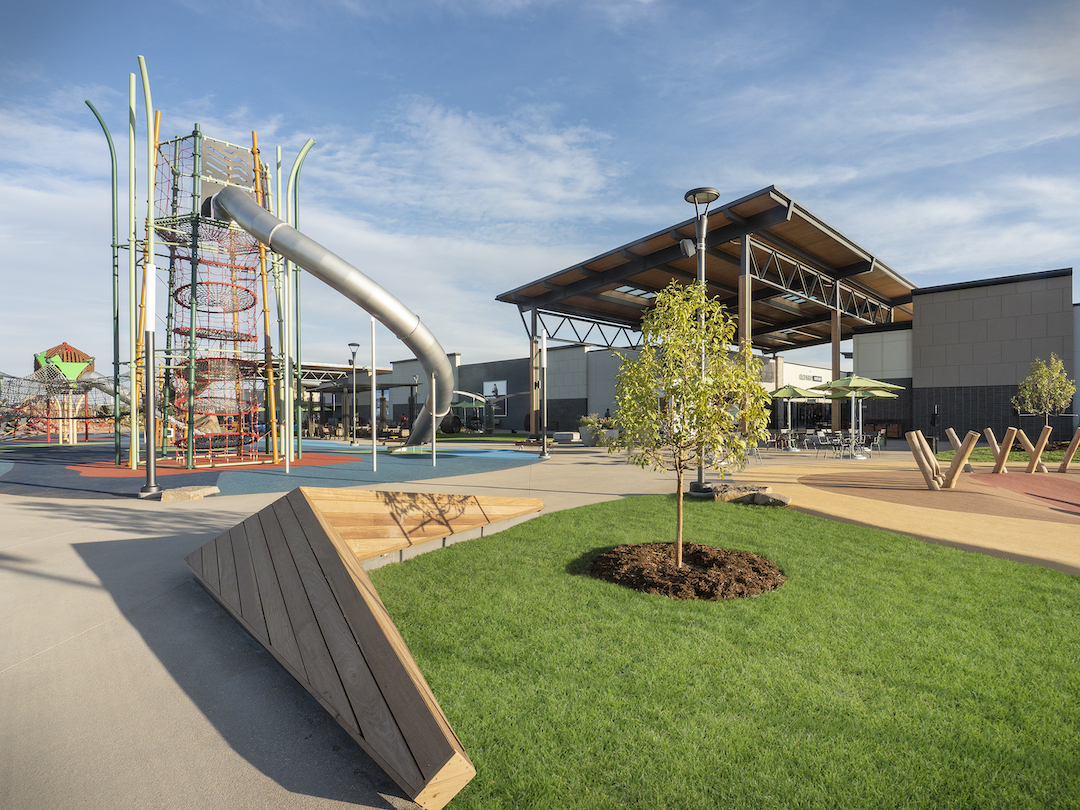
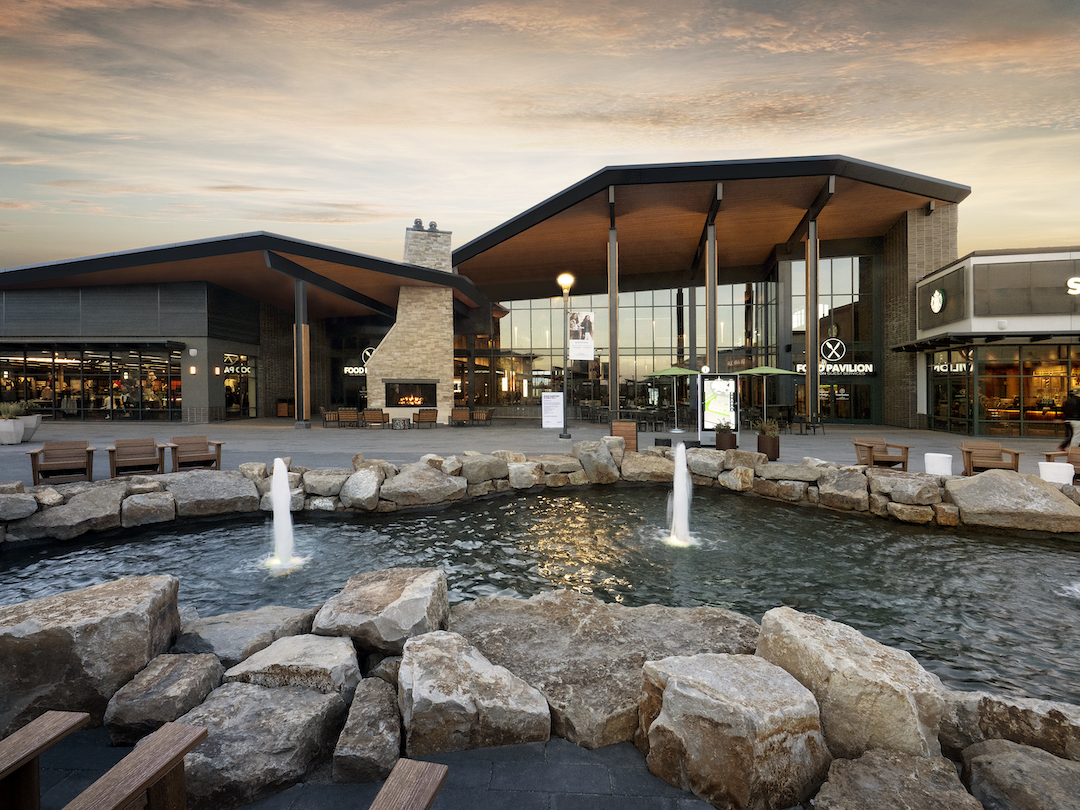 Arts, entertainment, and placemaking spaces at the Denver Premium Outlets in Thornton, Colo. Photos: Tim O’Hara Photography
Arts, entertainment, and placemaking spaces at the Denver Premium Outlets in Thornton, Colo. Photos: Tim O’Hara Photography
3. Tell the brand story. Walls should never just be walls—they are a foundation to personalize a development and engage your guests in your unique brand story. Your brand can no longer live just on the pylon. There should be touchpoints and winks to the brand throughout the space, from wayfinding to doorknobs. Every inch of your environment is a chance to introduce your brand voice to your guest.
Consider ways to demonstrate your brand through non-graphic/non-obvious decisions, as well. Does your brand have a focus on sustainability? Perhaps you leverage biophilic design to represent this. Are you more about creating community? Consider seating fixtures and furnishings that encourage gathering. By bringing their brand to life, developers have a chance to make a big emotional connection, with a small investment.
4. Leverage the parking lot. With the rise of car-sharing programs, developers will have more open parking space than ever before and should find ways to re-purpose that valuable square footage. Identifying opportunities to better leverage this space, both functionally and aesthetically, is vital.
Create dedicated click-and-collect parking spaces or BOPIS (buy online pickup in store) drive-through lanes to differentiate your development. Store pick-ups accounted for nearly a third of U.S. online sales last November and December, up from 22% just a year earlier, according to GlobalData Retail. These offerings would keep development traffic efficient and customer satisfaction high. And providing experiential offerings—food trucks, farmers markets, movie nights—in overflow parking spaces will keep the experience fresh to increase return visits.
5. Tell the local story. Find the story behind the site and tell it in a meaningful way to further enrich the customer experience. Stories of our history come in various shapes and sizes: notable property owners, history of the town, fun facts, etc.
A recent project in downtown Cincinnati leveraged underutilized sidewalks to tell the region’s rich brewing history through a series of wayfinding and graphic installations. Through rich storytelling and impactful graphics, this urban trail takes visitors and residents alike on a historical journey of adventure and discovery, in an area that was previously undervalued. Developers can take the same approach, identifying underutilized space on their property and bringing it to life by adding a layer of environmental graphics, placemaking, or storytelling.
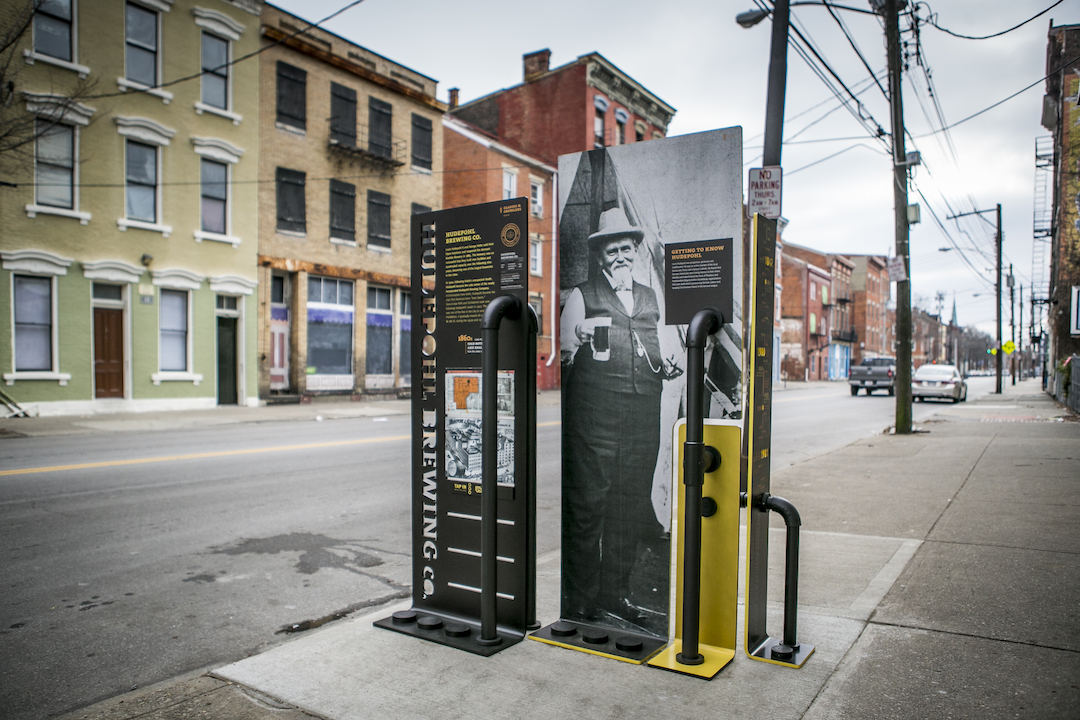
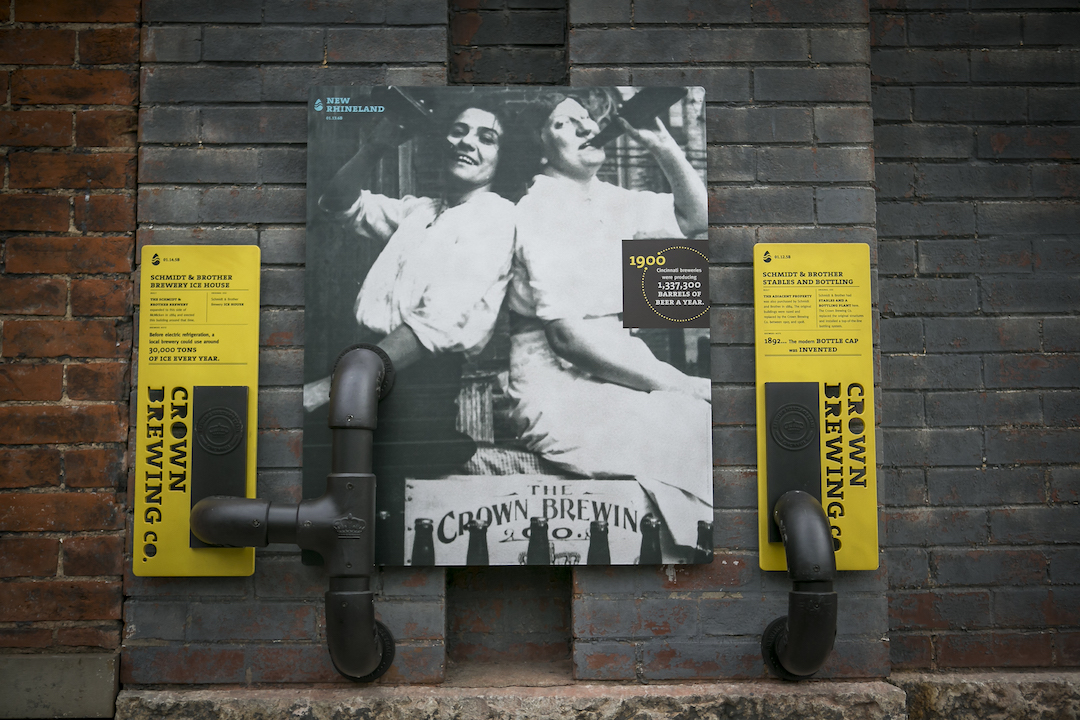 The Brewing Heritage Trail in Cincinnati leveraged underutilized sidewalks to tell the region’s rich brewing history through a series of wayfinding and graphic installations. Photos courtesy Prus Construction
The Brewing Heritage Trail in Cincinnati leveraged underutilized sidewalks to tell the region’s rich brewing history through a series of wayfinding and graphic installations. Photos courtesy Prus Construction
From parking lots to branded moments, dog parks to local art, people are seeking new, enjoyable experience. Find those moments of wow that engage customers on a deeper level, creating enjoyment and reasons to come back. Find opportunities to create social media moments, impactful design that people want to share. Most of all, have fun with leftover spaces. Take your guests on unexpected experiences by simply rethinking the space between.
About the Author
John Moores is the Director, Mixed Use with NELSON Worldwide. He provides oversight to meet client objectives nationwide, contributing a decade of expertise in delivering large, complex projects for well-known national brands, such as PNC, Synovus, Whole Foods, and GM. An expert in placemaking, Moores worked on retail, office, hospitality, and residential projects to create community-centered destinations driven by user experience.
NELSON is an award-winning firm delivering architecture, interior design, graphic design, and brand strategy services that transform all dimensions of the human experience, providing our clients with strategic and creative solutions that positively impact their lives and the environments where they work, serve, play, and thrive. Visit www.nelsonworldwide.com to learn more.
Related Stories
| Nov 3, 2011
Hardin Construction tops out Orlando Embassy Suites
The project began in April 2011 and is expected to open in fall 2012.
| Sep 30, 2011
Kilbourn joins Perkins Eastman
Kilbourn joins with more than 28 years of design and planning experience for communities, buildings, and interiors in hospitality, retail/mixed-use, corporate office, and healthcare.
| May 20, 2011
Hotels taking bath out of the bathroom
Bathtubs are disappearing from many hotels across the country as chains use the freed-up space to install ever more luxurious showers, according to a recent USAToday report. Of course, we reported on this move--and 6 other hospitality trends--back in 2006 in our special report "The Inn Things: Seven Radical New Trends in Hotel Design."
| May 18, 2011
Design diversity celebrated at Orange County club
The Orange County, Calif., firm NKDDI designed the 22,000-sf Luna Lounge & Nightclub in Pomona, Calif., to be a high-end multipurpose event space that can transition from restaurant to lounge to nightclub to music venue.
| Apr 12, 2011
Retail complex enjoys prime Abu Dhabi location
The Galleria at Sowwah Square in Abu Dhabi will be built in a prime location within Sowwah Island that also includes a five-star Four Seasons Hotel, the healthcare facility Cleveland Clinic Abu Dhabi, and nearly two million sf of Class A office space.
| Mar 11, 2011
Holiday Inn reworked for Downtown Disney Resort
The Orlando, Fla., office of VOA Associates completed a comprehensive interior and exterior renovation of the 14-story Holiday Inn in the Downtown Disney Resort in Lake Buena Vista, Fla. The $25 million project involved rehabbing the hotel’s 332 guest rooms, atrium, swimming pool, restaurant, fitness center, and administrative spaces.
| Mar 11, 2011
Guests can check out hotel’s urban loft design, music selection
MODO, Advaya Hospitality’s affordable new lifestyle hotel brand, will have an urban Bauhaus loft design and target design-, music-, and tech-savvy guest who will have access to thousands of tracks in vinyl, CD, and MP3 formats through a partnership with Downtown Music. Guest can create their own playlists, and each guest room will feature iPod docks and large flat-screen TVs.
| Mar 11, 2011
Texas A&M mixed-use community will focus on green living
HOK, Realty Appreciation, and Texas A&M University are working on the Urban Living Laboratory, a 1.2-million-sf mixed-use project owned by the university. The five-phase, live-work-play project will include offices, retail, multifamily apartments, and two hotels.
| Mar 9, 2011
Igor Krnajski, SVP with Denihan Hospitality Group, on hotel construction and understanding the industry
Igor Krnajski, SVP for Design and Construction with Denihan Hospitality Group, New York, N.Y., on the state of hotel construction, understanding the hotel operators’ mindset, and where the work is.


